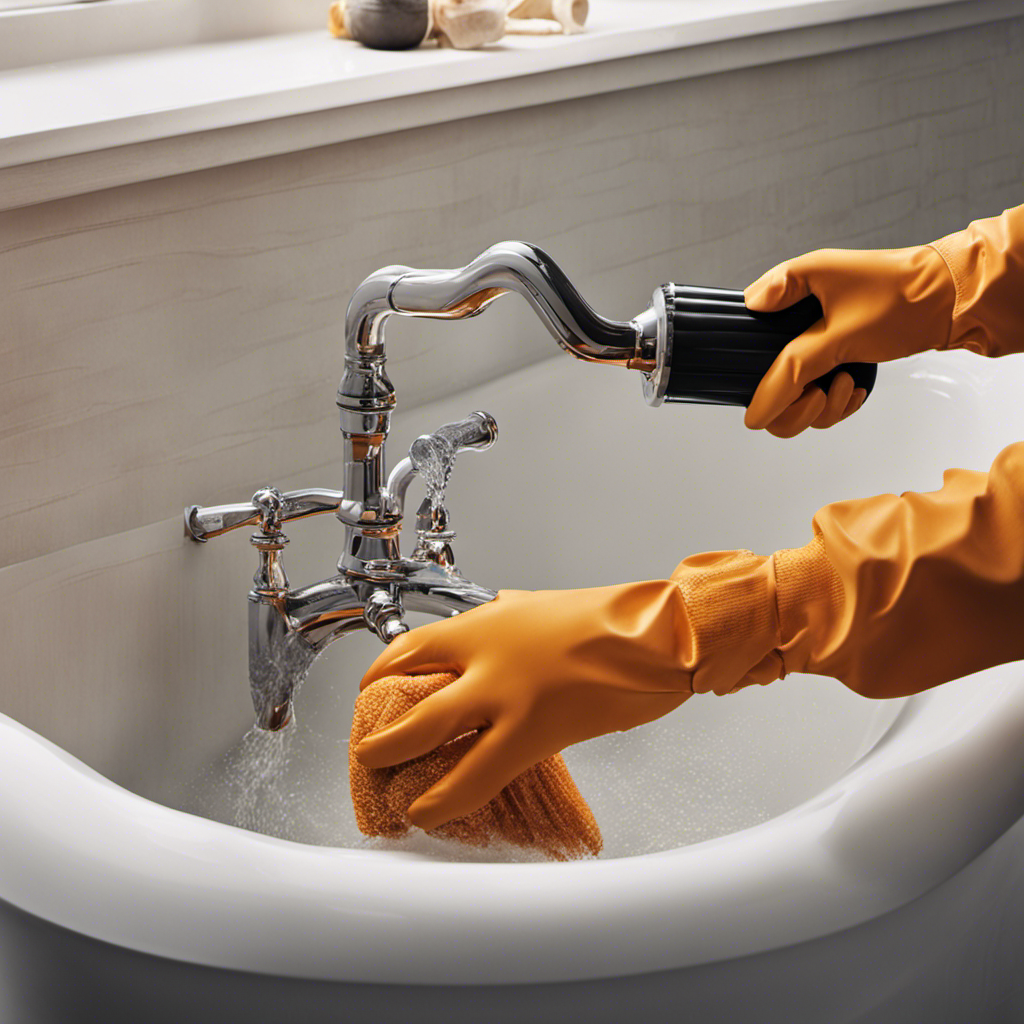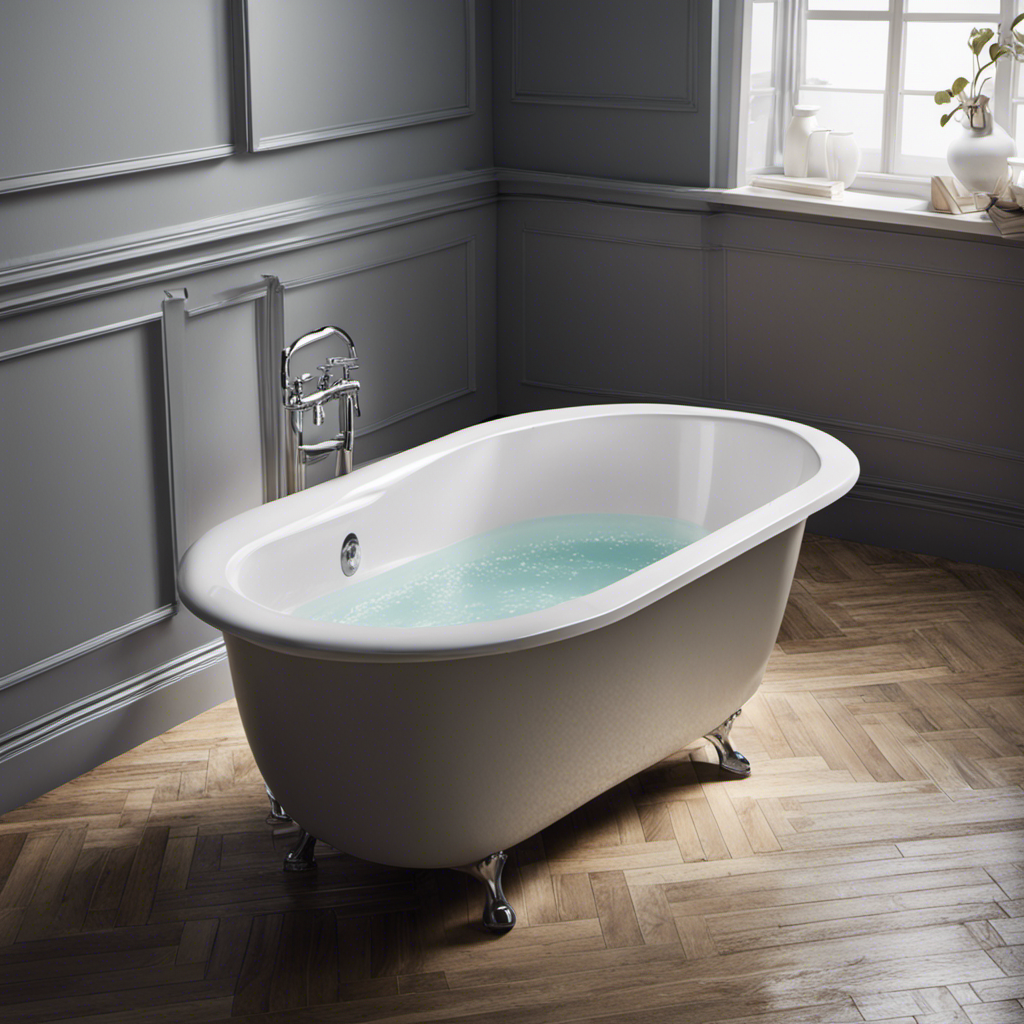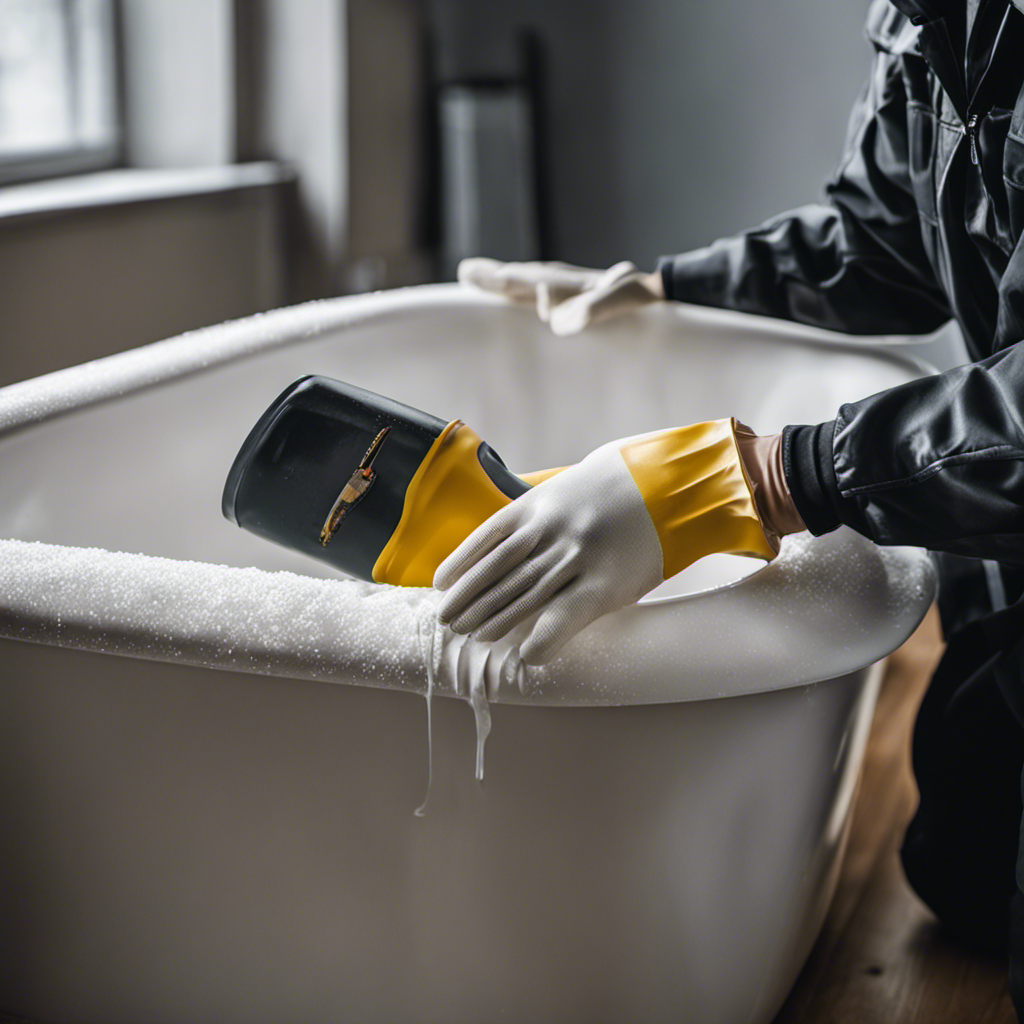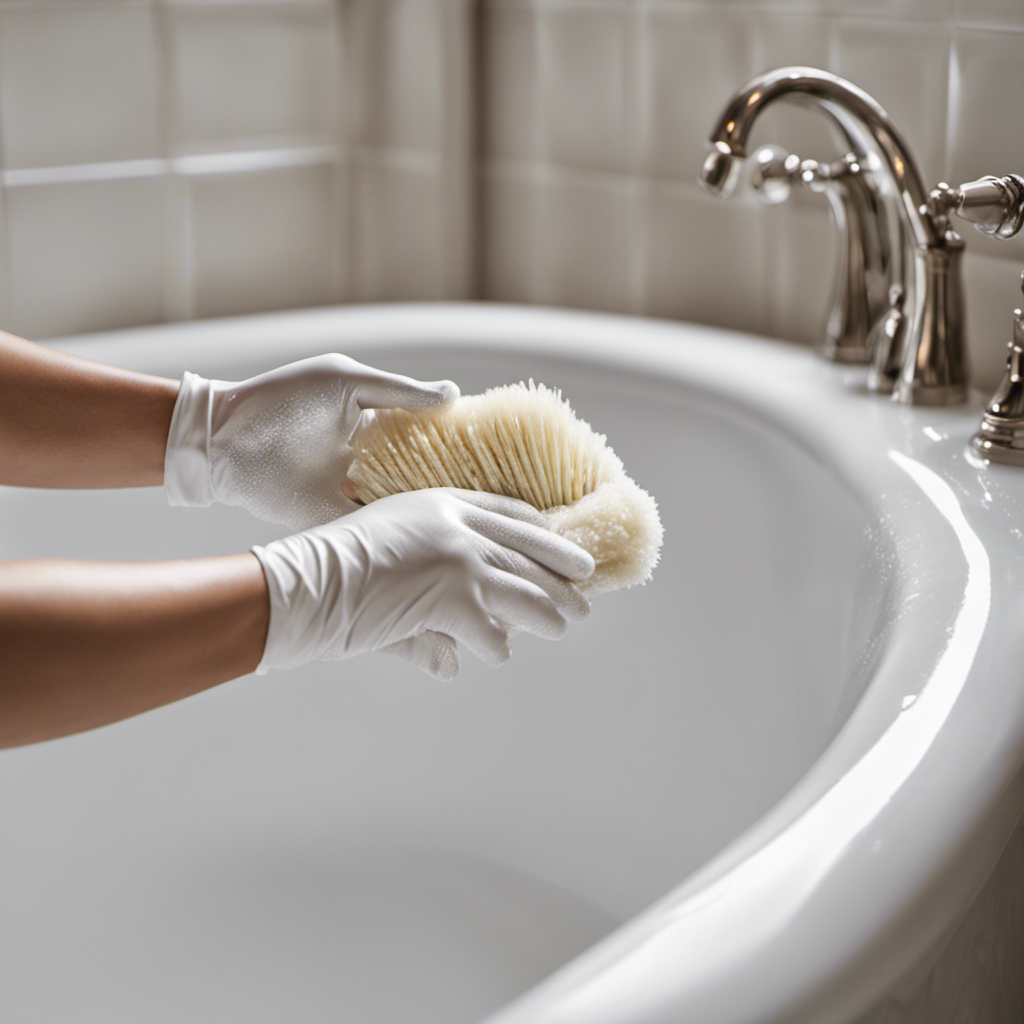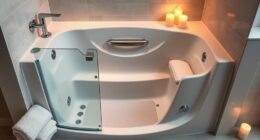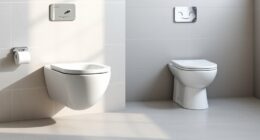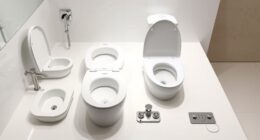Hey there!
So, you’re dealing with a stubborn drain blockage in your bathtub, huh? Trust me, I’ve been there. But don’t worry, I’ve got you covered.
In this article, I’m going to walk you through the steps to get that drain unclogged and water flowing freely again. From assessing the blockage to using a plunger and even trying some homemade drain cleaner, I’ve got some tried and true methods to share with you.
So, let’s dive in and tackle that drain issue together!
Key Takeaways
- Assess the drain blockage to determine the cause and find the appropriate solution.
- Gather all necessary tools before starting the drain-clearing process.
- Use a plunger to clear minor blockages by creating a suction effect.
- Consider using a homemade drain cleaner solution using vinegar and baking soda before calling a professional plumber.
Assess the Drain Blockage
First, check if the water is draining slowly or not at all. Assessing drain issues is the first step in solving bathtub drain blockages.
There are several common causes of bathtub drain blockages that you should be aware of. Hair, soap scum, and mineral build-up are some of the most frequent culprits. Hair can accumulate over time and create a tangled mess that clogs the drain. Soap scum can also build up and form a thick layer that restricts water flow. Additionally, mineral build-up from hard water can accumulate and cause blockages. Understanding these causes will help you identify the issue and find the appropriate solution.
Now that you have assessed the drain blockage, it’s time to gather the necessary tools.
Gather the Necessary Tools
Before you start, make sure you have all the necessary tools. Having the right tools on hand is essential for tackling common bathtub problems and preventing future drain blockages.
To get the drain out of the bathtub, you will need a few items. Firstly, a pair of gloves will protect your hands from any potential debris or chemicals. Next, a screwdriver or wrench will come in handy for removing the drain cover or any screws holding the drain in place. Additionally, a plunger will be necessary for clearing the drain. Lastly, a bucket or container will be useful for catching any water that may spill out during the process.
With these tools at your disposal, you’ll be ready to move on to the next step: using a plunger to clear the drain.
Use a Plunger to Clear the Drain
To clear the drain, start by firmly positioning the plunger over the clogged area. Apply downward pressure and then quickly pull up to create a suction effect. Repeat this plunging motion several times until the clog is dislodged.
Plungers are effective unclogging techniques for minor blockages in bathtubs. However, it is important to take preventive measures to avoid future clogs. Regularly remove hair and debris from the drain using a drain cover or strainer. Additionally, avoid pouring grease, oil, or large amounts of soap down the drain. These substances can solidify and cause blockages.
By implementing these preventive measures, you can reduce the likelihood of encountering a clogged drain in the future.
Now, let’s transition into the next section and explore a homemade drain cleaner solution.
Try a Homemade Drain Cleaner Solution
If you’re looking for an alternative solution, you can try making a homemade drain cleaner using ingredients you likely already have in your kitchen. Using vinegar and baking soda as a drain cleaner is a popular and effective method that is also environmentally friendly. Vinegar is a natural acid that helps break down grease and grime, while baking soda acts as a gentle abrasive to scrub away buildup. When combined, these two ingredients create a chemical reaction that can help unclog your drain. Here are the steps to make and use this homemade drain cleaner:
| Step | Ingredients | Instructions |
|---|---|---|
| 1 | 1 cup vinegar | Pour the vinegar down the drain |
| 2 | 1 cup baking soda | Sprinkle the baking soda over the vinegar |
| 3 | Hot water | Let the mixture sit for at least 30 minutes |
| 4 | Boiling water | Flush the drain with boiling water |
Benefits of using natural drain cleaners include avoiding the use of harsh chemicals that can damage pipes, being cost-effective, and being safe for the environment.
Consider Calling a Professional Plumber
Consider hiring a professional plumber if you’re experiencing persistent plumbing issues that homemade solutions haven’t been able to resolve. While attempting to fix a clogged bathtub drain yourself can be tempting, it’s important to weigh the pros and cons of DIY versus professional help.
Here are some key points to consider:
-
Pros of hiring a professional plumber:
-
Expertise: Plumbers have the knowledge and experience to accurately diagnose and fix plumbing problems.
-
Time-saving: Hiring a professional can save you time and effort, as they can quickly identify and resolve the issue.
-
Long-term solutions: Professionals provide lasting solutions that prevent recurring problems.
-
Cons of hiring a professional plumber:
-
Cost: Hiring a plumber may involve expenses, especially if the problem requires extensive repairs.
-
Dependency: Relying on a professional may make you less self-sufficient in handling future plumbing issues.
-
Scheduling: You may need to coordinate with the plumber’s availability, which could cause delays.
Common causes of bathtub drain blockages include hair, soap scum, and mineral buildup. These substances can accumulate over time, gradually reducing the flow of water and causing blockages. While there are DIY methods to unclog drains, such as using a plunger or drain snake, persistent or severe blockages may require professional intervention.
Plumbers have specialized tools and techniques to clear even the most stubborn clogs, ensuring your bathtub drain functions properly. Remember to consider the pros and cons before making a decision, and don’t hesitate to call a professional if needed.
Conclusion
In conclusion, tackling a clogged bathtub drain requires both the right tools and a little bit of know-how. Just like navigating through the twists and turns of life, it’s important to assess the situation, gather the necessary tools, and use the right techniques.
Whether you opt for the plunging method or a homemade drain cleaner, persistence and patience will be your allies. However, if all else fails, don’t be afraid to seek the help of a professional plumber. Remember, sometimes in life, it’s best to rely on the expertise of others to ensure a smooth and unclogged path ahead.
